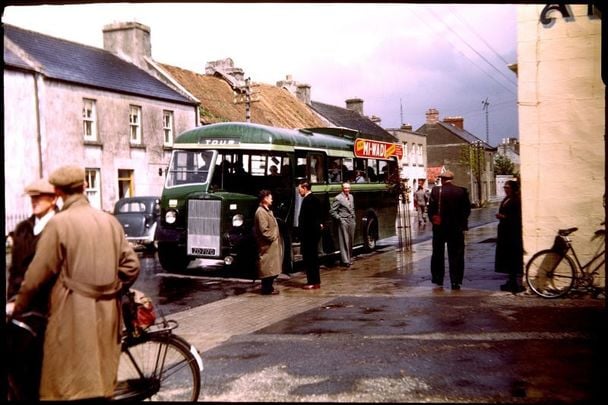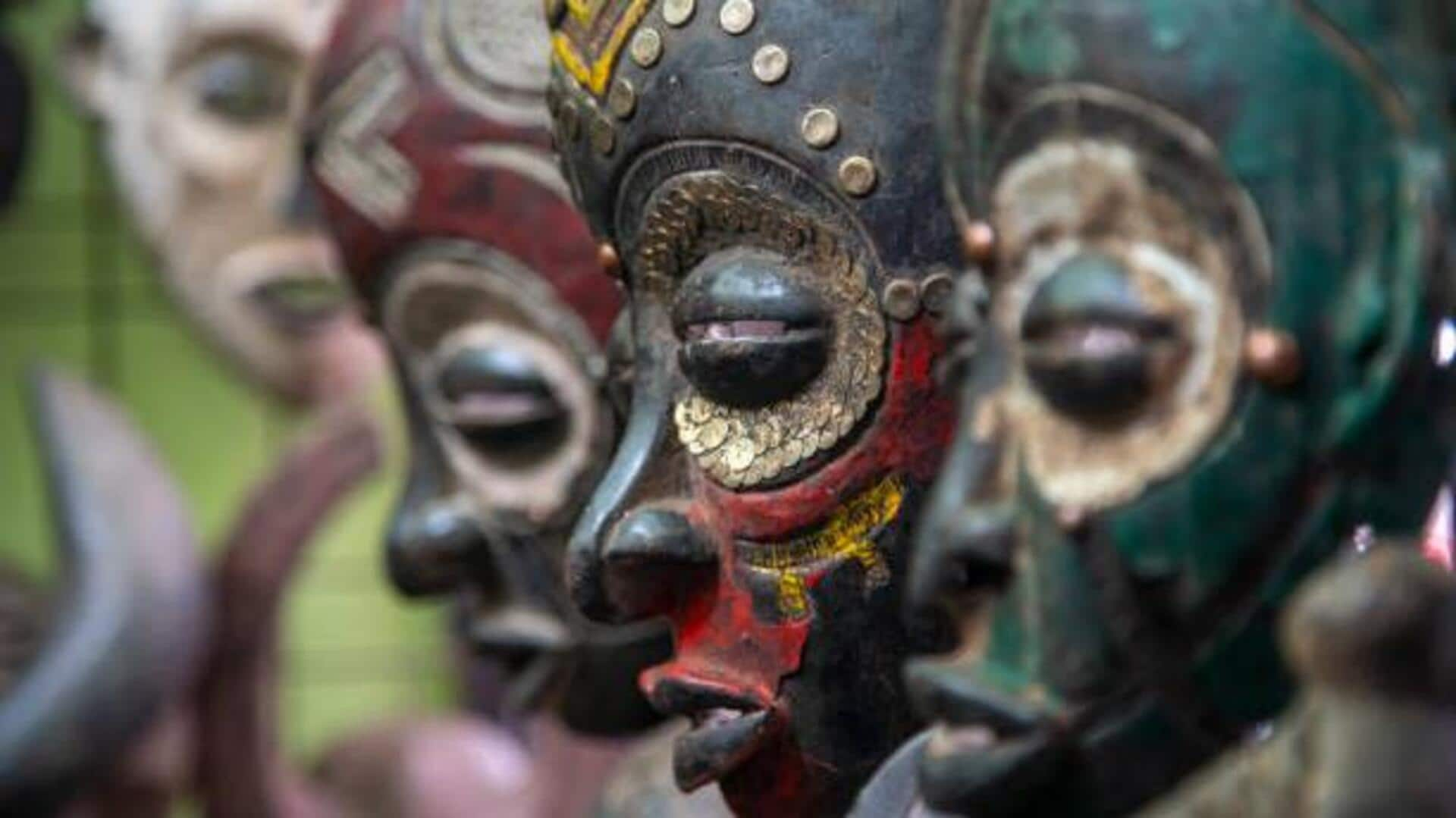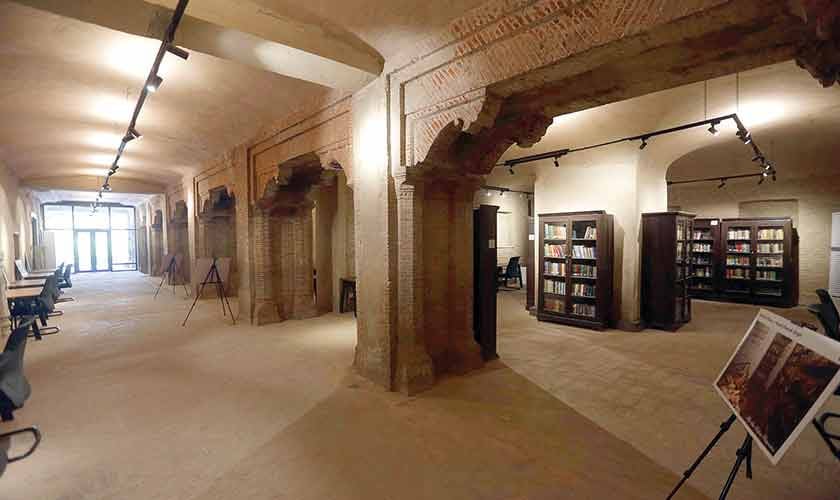A Savvy Traveler’s Journey to Ireland in 1953
————————————————-
In 1953, my late father Martin J. Walsh Jr., affectionately nicknamed Marty to distinguish him from his father Martin J. Walsh Sr., embarked on a remarkable journey from rural Minnesota to the island of Ireland. A native of Murdock, Minnesota, Marty was 28 years old and working as a railroad telegrapher, communicating in Morse code for the Great Northern and, later, Burlington Northern Railroad — a career he held from 1943 until 1984.
Before his trip, Marty packed a portable 35mm Clarus camera and Kodachrome slide film, along with other essentials for his world travels. Although photography was never his profession, his vibrant Kodachrome slides remain today, offering a rare glimpse into his expedition and the Ireland of the early 1950s.
Our Family Roots: Irish Immigrant Settlement in Minnesota
————————————————————
Our family’s story is deeply intertwined with Irish Catholic immigration to America. We were among the mainly Irish immigrant community settled in De Graff, a village in rural Swift County, Minnesota. Our ancestors arrived in the late 1800s, part of an initiative led by the late Saint Paul Archbishop John Ireland who helped about four thousand Irish Catholic families escape urban slums and resettle in farmlands across western Minnesota between 1875 and 1885.
Growing up, my father often recounted stories about our heritage, proudly saying, “We are Archbishop John Ireland’s people.” Coincidentally, the Archbishop shared a last name with the country our family left behind generations earlier.
Today, I live just three miles from De Graff in Murdock, in the very house where my father was born in 1924. For those interested in learning more about De Graff and the historic Church of St. Bridget, resources are available through the United States Department of the Interior National Park Service website. The Library of Congress also offers detailed presentations on Irish-Catholic immigration to America.
The 1953 Journey: Travel Details and Experiences
—————————————————–
In early 1953, my father prepared for his trip to Ireland, England, and France, including a necessary stopover in Canada. His US Passport, issued February 6, 1953, lists him as 5 feet 11 inches tall, with brown hair and hazel eyes, born in Murdock, Minnesota, and employed as a telegraph operator. Though the passport mentions no wife or children, I remember him referring to himself as “Black Irish,” an expression often used by Irish descendants with dark hair and eyes, connected by theory to Spanish lineage.
His journey began by train from Willmar, Minnesota, and eventually by plane, with a refueling stop in Gander, Newfoundland, Canada—a critical early postwar transatlantic air travel point. From there, he arrived in Belfast, Northern Ireland. Interestingly, Gander Airport later served as a designated alternate landing site for NASA’s Space Shuttle program due to its strategic location and runway capacity.
Marty corresponded with family back home through American Express offices, which kept communication flowing with news from Murdock and the local Catholic parish.
Exploring Ireland Through Marty’s Lens
——————————————–
Marty’s Kodachrome slides capture places and moments from his travels—scenes from Dublin, Galway, Limerick, and County Kerry. Notably, he visited Killarney in County Kerry, the region where our family originates. Though he did not locate our ancestral farm in Townland Dromkerry, a discovery I made in 2018, his photos include breathtaking views of the Gap of Dunloe, Lakes of Killarney, and surrounding mountain ranges like the MacGillycuddys Reeks and Purple Mountain.
Among his many images is one of Saint Stephen’s Green in Dublin, taken after a rain, along with views from his room at the Shelbourne Hotel, which overlooked the famous park. Marty also documented a three-hour pony and trap ride through the Gap of Dunloe, train stations, landscapes, and countryside vistas.
His travels took him to iconic sites featured in the 1952 film *The Quiet Man*, starring John Wayne, Maureen O’Hara, and Barry Fitzgerald, including John Wayne’s house and other filming locations around Galway. I suspect the movie sparked Marty’s interest in Ireland and perhaps inspired his journey to reconnect with his roots. (If interested, you can view *The Quiet Man* trailer here.)
A Personal Reflection
————————–
In January 2019, while staying at the Shelbourne Hotel, I had the unique experience of watching *The Quiet Man* from my hotel room—a luxury my father could not have imagined. Although I lacked his hotel window view of Saint Stephen’s Green, I enjoyed a courtyard view and glimpsed the Irish flag from the rooftop.
My father’s adventurous spirit and love for photography live on through his Kodachrome images, which are preserved and shared online. You can view more of Martin J. Walsh Jr.’s photos of Ireland on [Flickr](#).
About the Author
——————-
Jannet L. Walsh, of Murdock, Minnesota, is a photographer, writer, and educator. She is the author of the forthcoming creative nonfiction quest narrative *Higgledy-Piggledy Stones: Family Stories from Ireland and Minnesota*, scheduled for publication in 2022 by Shanti Arts Publishing. Additionally, she has compiled the *Irish Genealogy Toolkit*, a comprehensive list of resources for researching Irish roots.
Follow Jannet Walsh on [Facebook](#) and [Twitter](#) for more stories and updates.
—
*Originally published in 2022; updated in September 2025.*
https://www.irishcentral.com/opinion/others/ireland-images-kodachrome



